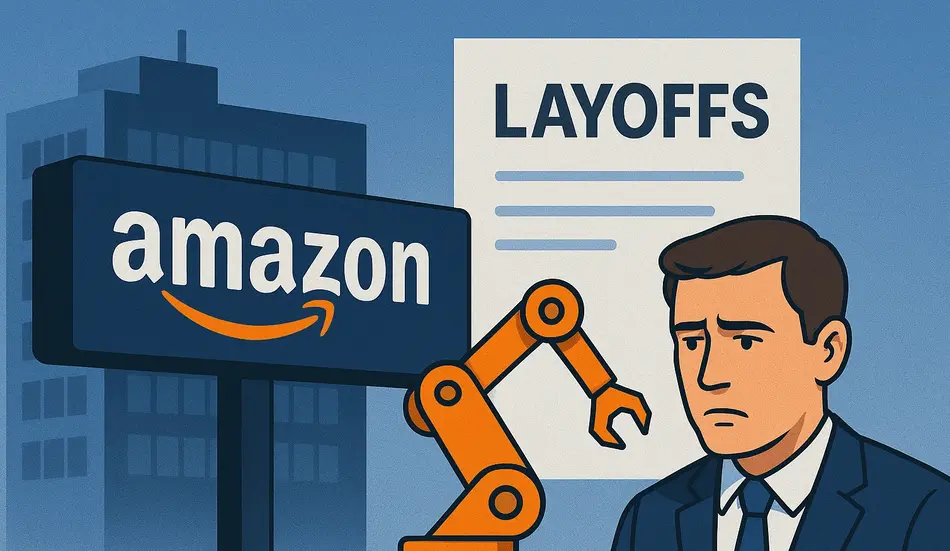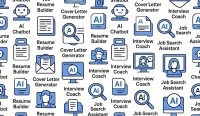Amazon will cut roughly 30,000 corporate roles, the largest layoff in company history. It follows ~27,000 cuts in 2022–2023 and hits multiple business units. With ~350,000 corporate employees, the reduction is near 10% on the salaried side.
This continues a broader trend across big tech: Microsoft, Salesforce, Intel, and others have trimmed thousands of white‑collar roles in 2025, with spikes clustering around quarter‑ends.
Why Now
Two forces are colliding:
1) Post‑pandemic “rightsizing.” Many firms over‑hired in 2021–2022, then spent 2023–2025 unwinding. Year‑end also incentivizes clean books before earnings and 2026 planning.
2) AI adoption. Leaders are explicit: generative AI and agents will let companies operate with fewer people in some functions. Even if tools aren’t perfect, executives accept some quality trade‑offs in exchange for lower cost structures and faster throughput.
Combine both—and in a market that rewards cost cuts with stock pops—and layoffs become the fastest lever.
What It Signals For Tech Workers
- The “always hiring” myth is over—for now. Roles once seen as untouchable (software, PM, design, ops) face scrutiny unless they are revenue‑critical or AI‑leveraged.
- Reallocation won’t be 1:1. Eliminating 30,000 roles won’t create 30,000 new AI jobs. Some new roles will appear, but net headcount likely declines.
- Hiring bars are higher. More candidates pursue fewer openings. Keyword‑screened ATS funnels and leaner teams favor applicants who show measurable impact and AI fluency in their domain.
What It Signals For Tech Workers
The “always hiring” era is over — selectivity is in. As AI reshapes roles and headcount contracts, only professionals who demonstrate measurable impact and technical adaptability stand out. The next wave of hiring rewards those who integrate AI fluency into core business value. In today’s market, skill evolution isn’t optional — it’s survival.
Post Jobs & Hire AI-Ready Talent →What To Do Now (Practical Playbook)
1) De‑risk your current seat. Document your impact in business terms (revenue, cost, time, risk). Propose 1–2 AI‑assisted productivity wins for your team. Become the person who ships more with less.
2) Upgrade your market story. Convert task‑based bullets into outcomes and quantify at least ~60%. Tailor for each posting’s core skills—only those you can prove.
3) Target resilient demand. Prioritize roles tied to revenue, cost savings, infrastructure reliability, compliance, security, and customer retention. “Nice‑to‑have” products are vulnerable.
4) Show applied AI, not hype. Demonstrate domain‑specific use: automation you designed, quality gains you delivered, days shaved from a process, incidents reduced—plus the stack (e.g., Python, LangChain, RAG, vector DBs, MLOps).
5) Network with intent. Map 20–30 warm connections across 5–8 target companies. Ask for 15‑minute calls, not jobs. Use concise one‑pager + portfolio links. Referrals beat cold applies.
6) Protect your data. Job hunting spreads personal info; use opt‑outs and privacy tools to remove broker listings and lock down profiles.
The Market Picture
2025 tech layoffs are below 2023’s peak, but still lumpy. Data shows quarterly spikes; October surged on Amazon’s news. Expect another wave risk into December as firms tune 2026 budgets.
Important: many JDs lag reality. Companies want candidates who can prove impact and navigate ambiguity more than checkbox skills lists. Clear, metric‑backed stories win.
How To Talk About This In Interviews
Brief, neutral framing works: “Our org consolidated around AI‑enabled workflows and core revenue lines. My team’s scope was sunset. Here’s the impact I delivered, the automations I owned, and why I’m excited to bring that leverage here.”
Avoid complaining; pivot to outcomes, efficiencies, and learning.
FAQs
Is this just a tech problem?
No. Finance, media, logistics, and healthcare admin are also consolidating. But big tech moves set norms others copy.
Should I wait out the storm?
If you’re safe and growing, double down. Otherwise, start a quiet search now; end‑of‑year cycles can tighten pipelines.
Do I need an AI job title?
No. You need AI leverage. Show how you used AI to increase output quality, speed, or margins in your current function.




